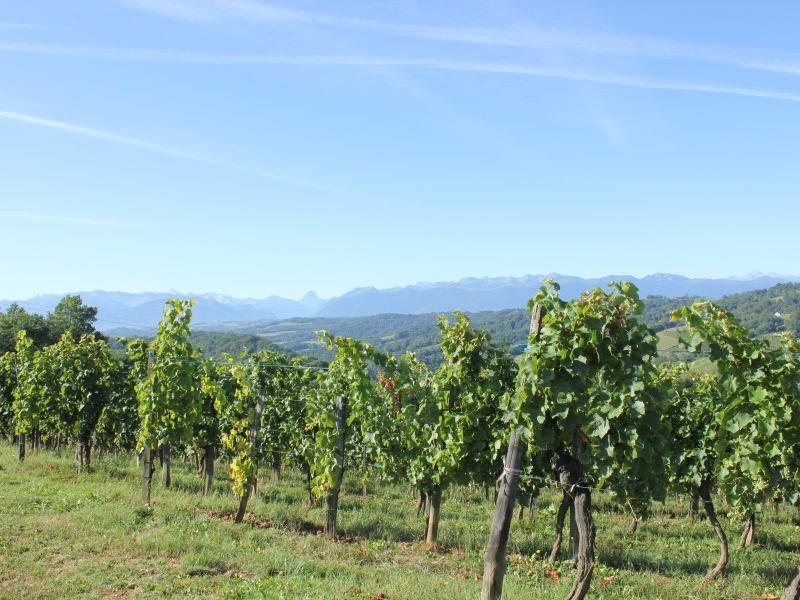THE GEOLOGY AT THE CLOS LAPEYRE
OUR VINE IS NOURISHED BY THE SOIL
The relief with a major North-South axis makes it possible to distinguish two types of orientations on Chapelle de Rousse :
- South to Southwest slopes: high, sloping and very well exposed,
- Circus curves open to the east: very hot and protected from westerly winds.

The bedrock is made up of the famous limestone “poudingue” from Jurançon. It’s a combination of stones formed from the erosion of the pyrenees. It is covered with soft levels (sandy clay and siliceous clay) which come from the alteration of the “poudingue”, alternated with layers of accumulation of clays, silts, and sands, with pebbles on the surface sometimes located in sheets.
The soil is in places poorly developed and therefore shallow, particularly on the southern slope, with outcrops of “poudingue” on the surface.
The disturbed relief, the numerous faults, and the important leaching give very diverse soils which therefore involve different cropping systems.
- tillage on medium-sloped plots with a high clay content,
- subsoiling after harvest when drainage is difficult,
- the supply of calcium (lime) and organic matter in the form of compost that we produce ourselves,
- stopping the use of synthetic plant protection products …
